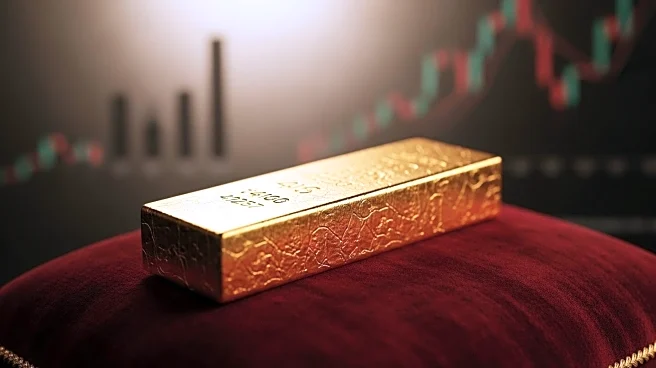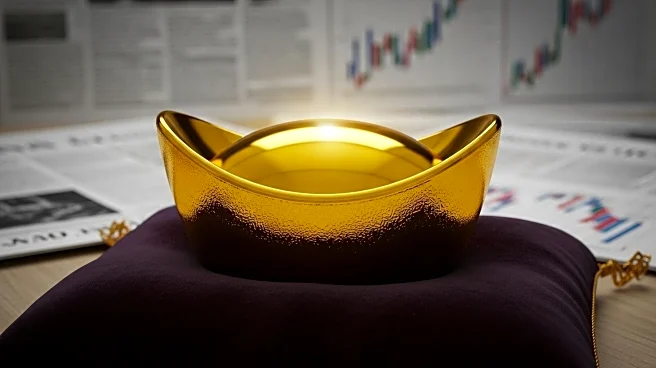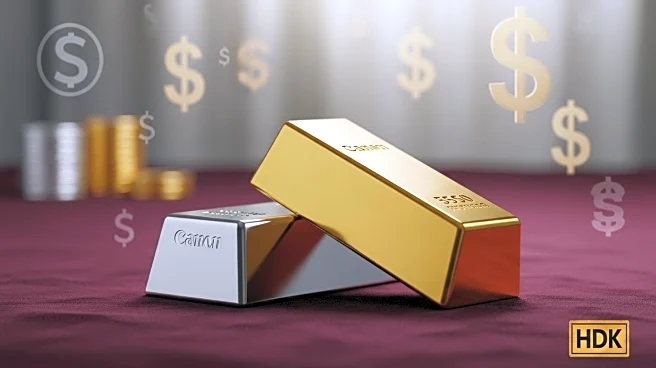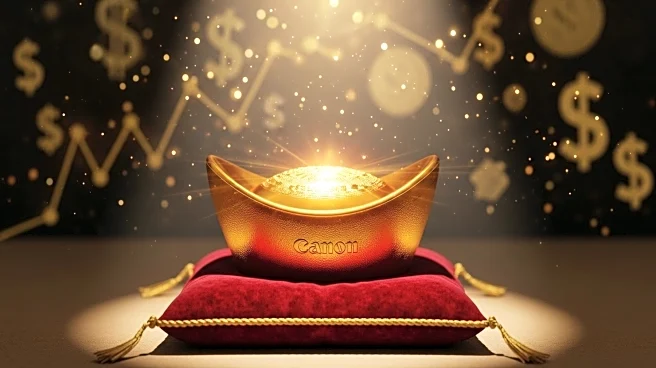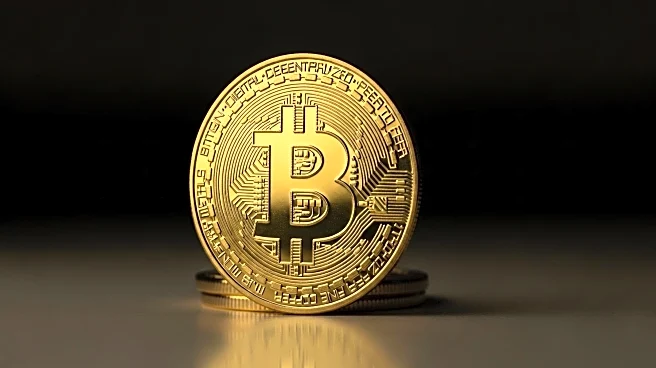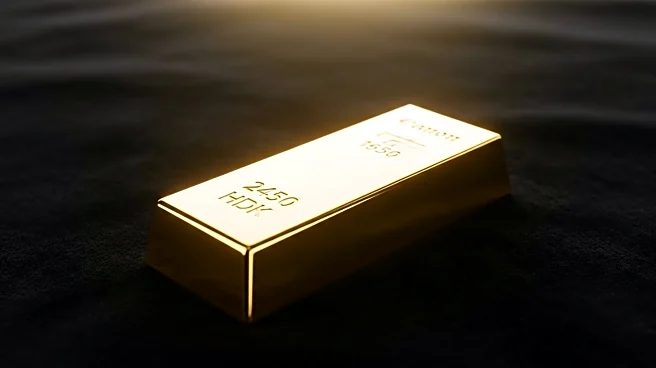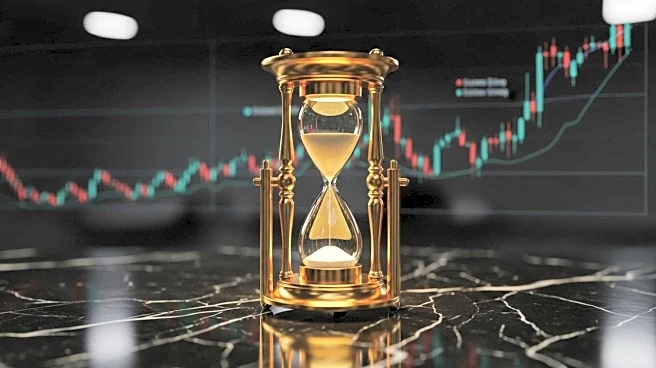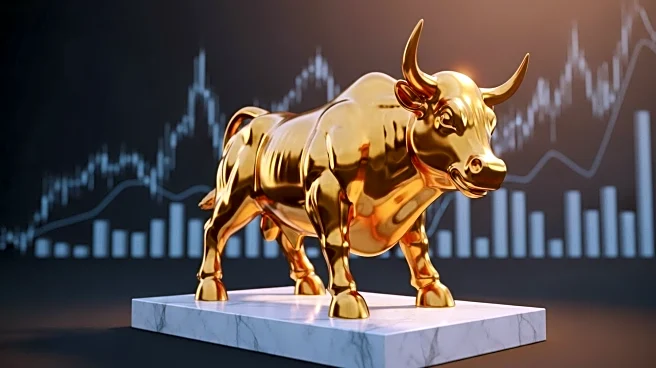What is the story about?
What's Happening?
The price of gold is approaching $4,000 per ounce, marking a significant increase of about 50% this year. This surge is attributed to heightened demand from investors, money managers, and central banks seeking a safe haven amid political and economic turmoil. The current rise in gold prices echoes the late 1970s, a period marked by high inflation and geopolitical tensions. Analysts suggest that the ongoing U.S. government shutdown and political uncertainty are driving investors away from U.S. assets, contributing to the gold rally. Additionally, the Federal Reserve's interest rate cuts and a weakened dollar have diminished the appeal of traditional safe havens like U.S. government bonds.
Why It's Important?
The rising gold prices reflect broader economic concerns, including political instability and fiscal challenges in the U.S. The shift towards gold indicates a lack of confidence in the dollar and U.S. creditworthiness, which has been affected by a recent downgrade from Moody's. This trend could have significant implications for the U.S. economy, potentially affecting investor sentiment and financial markets. The increased demand for gold as a hedge against uncertainty underscores the need for stable economic policies and fiscal management to restore confidence in U.S. assets.
What's Next?
If the current economic and political uncertainties persist, gold prices may continue to rise, further impacting investor behavior and market dynamics. The Federal Reserve's monetary policy decisions, particularly regarding interest rates, will be closely watched as they could influence the dollar's strength and, consequently, gold demand. Additionally, any resolution to the government shutdown or changes in fiscal policy could alter the current trajectory of gold prices.
AI Generated Content
Do you find this article useful?
